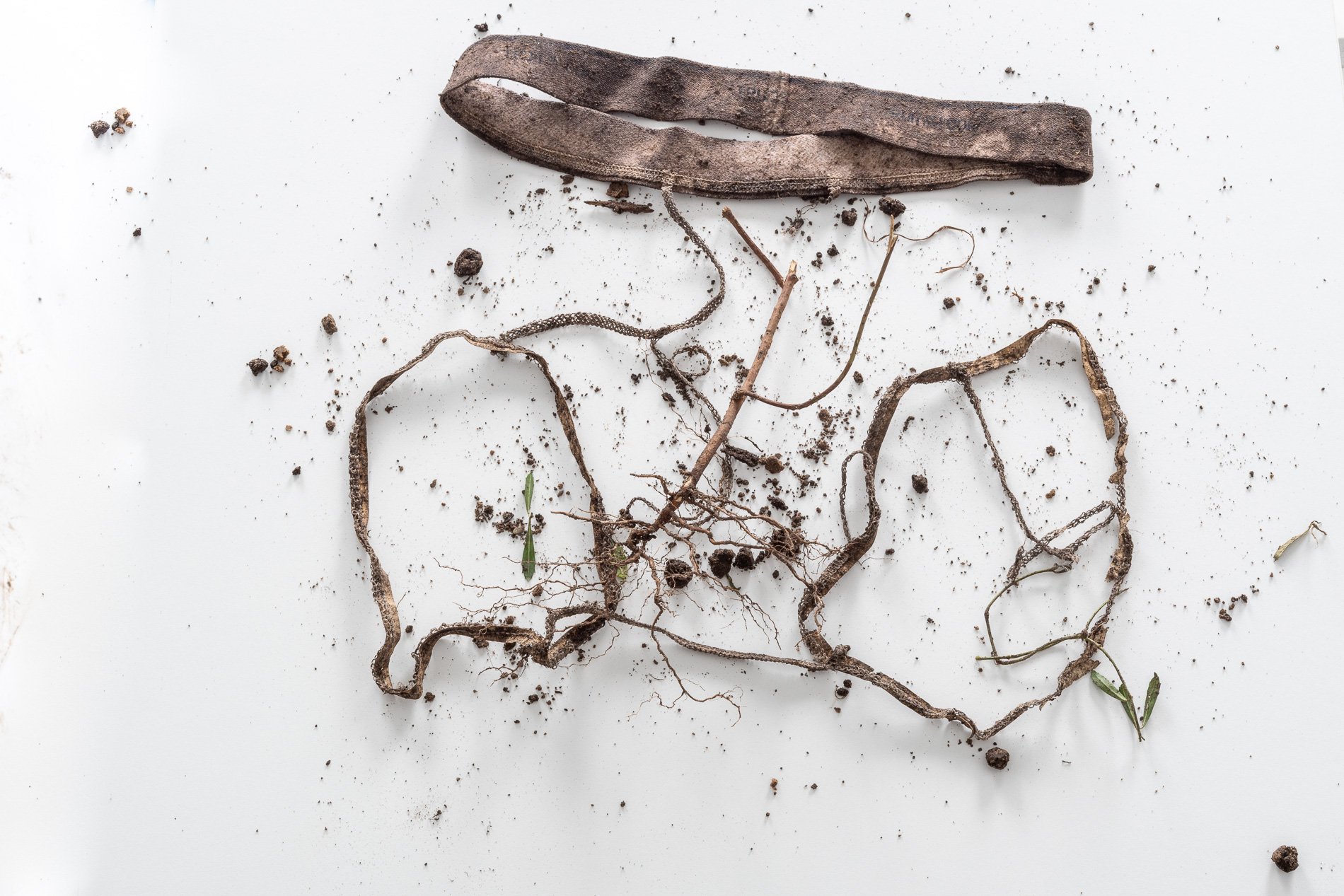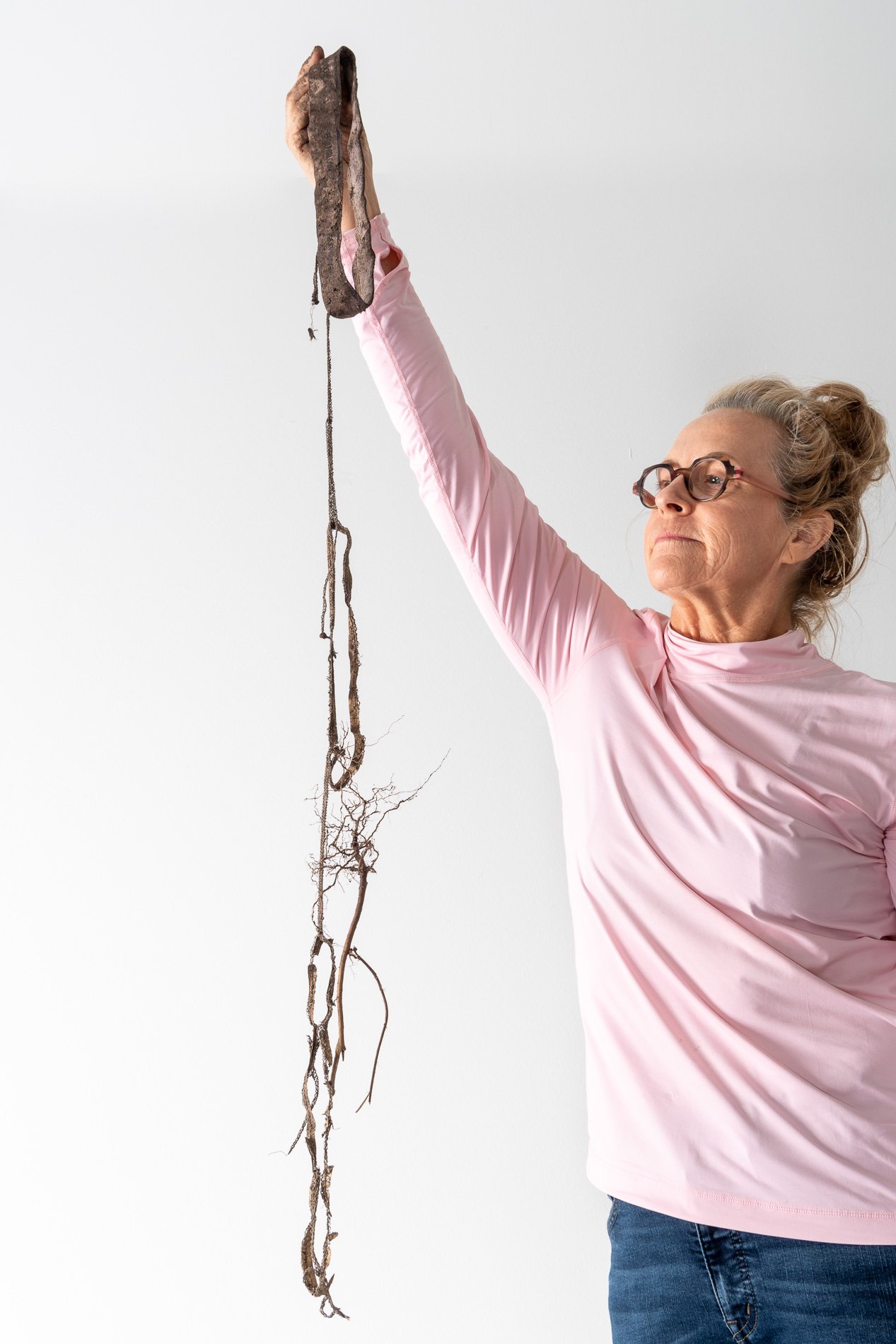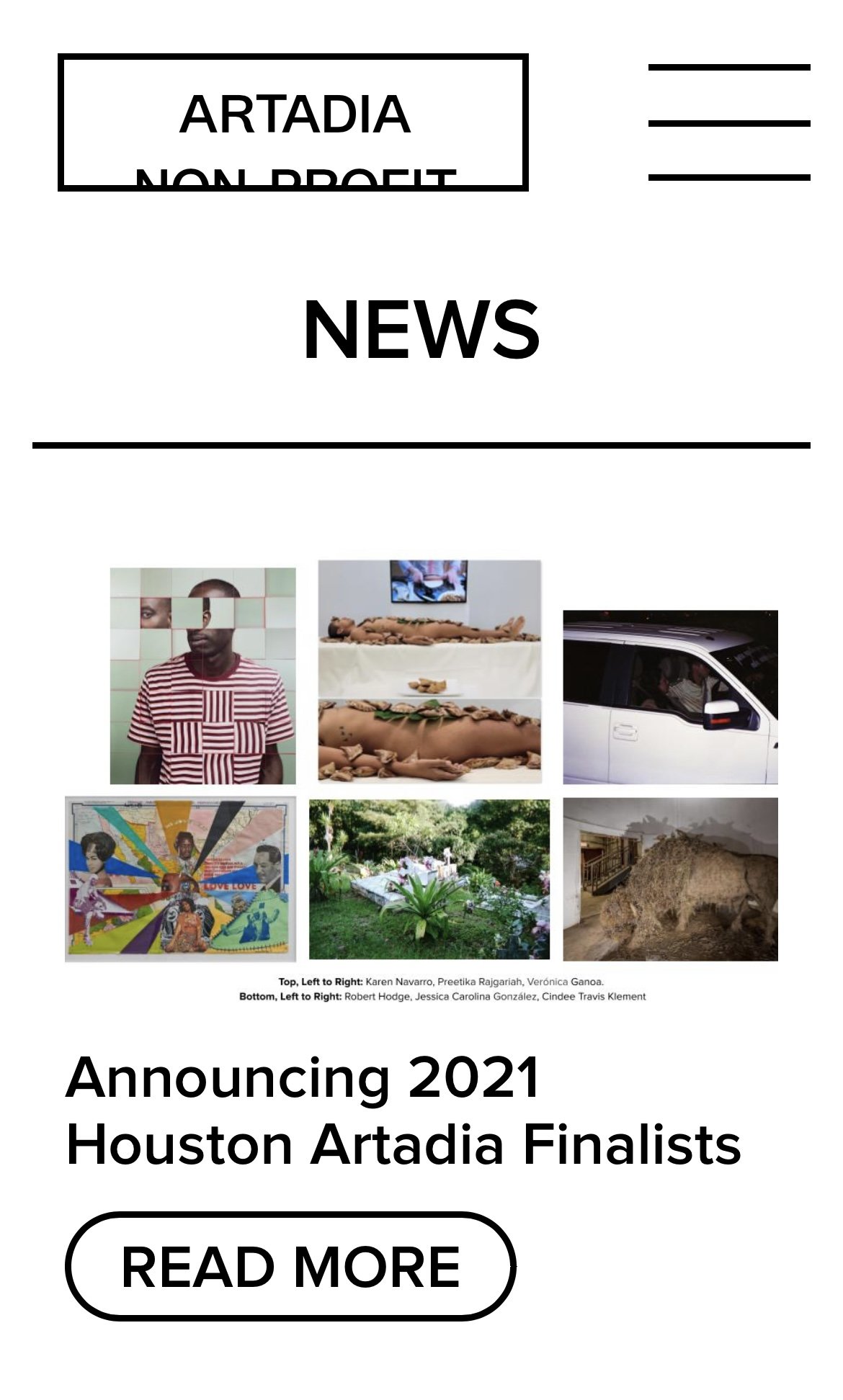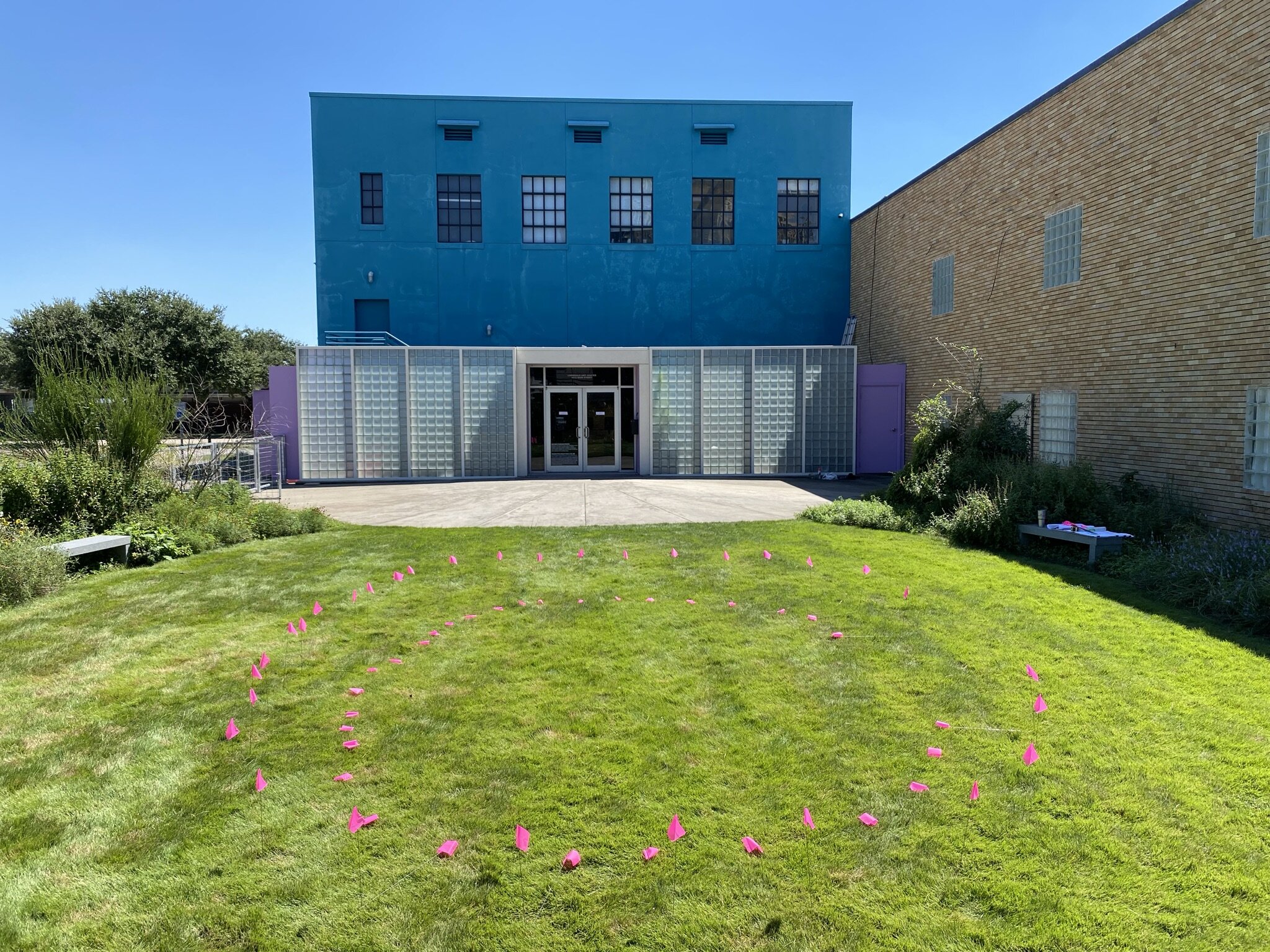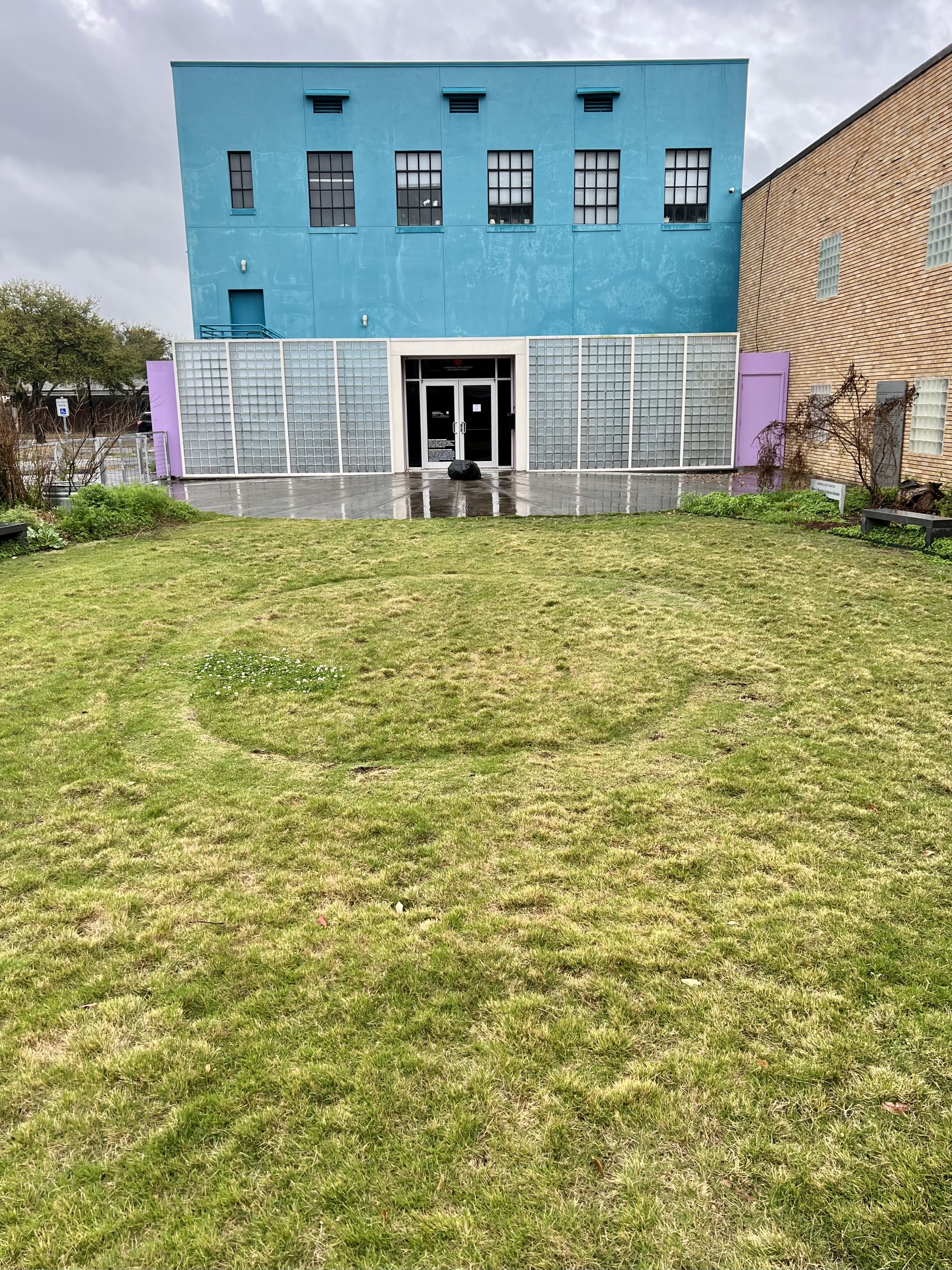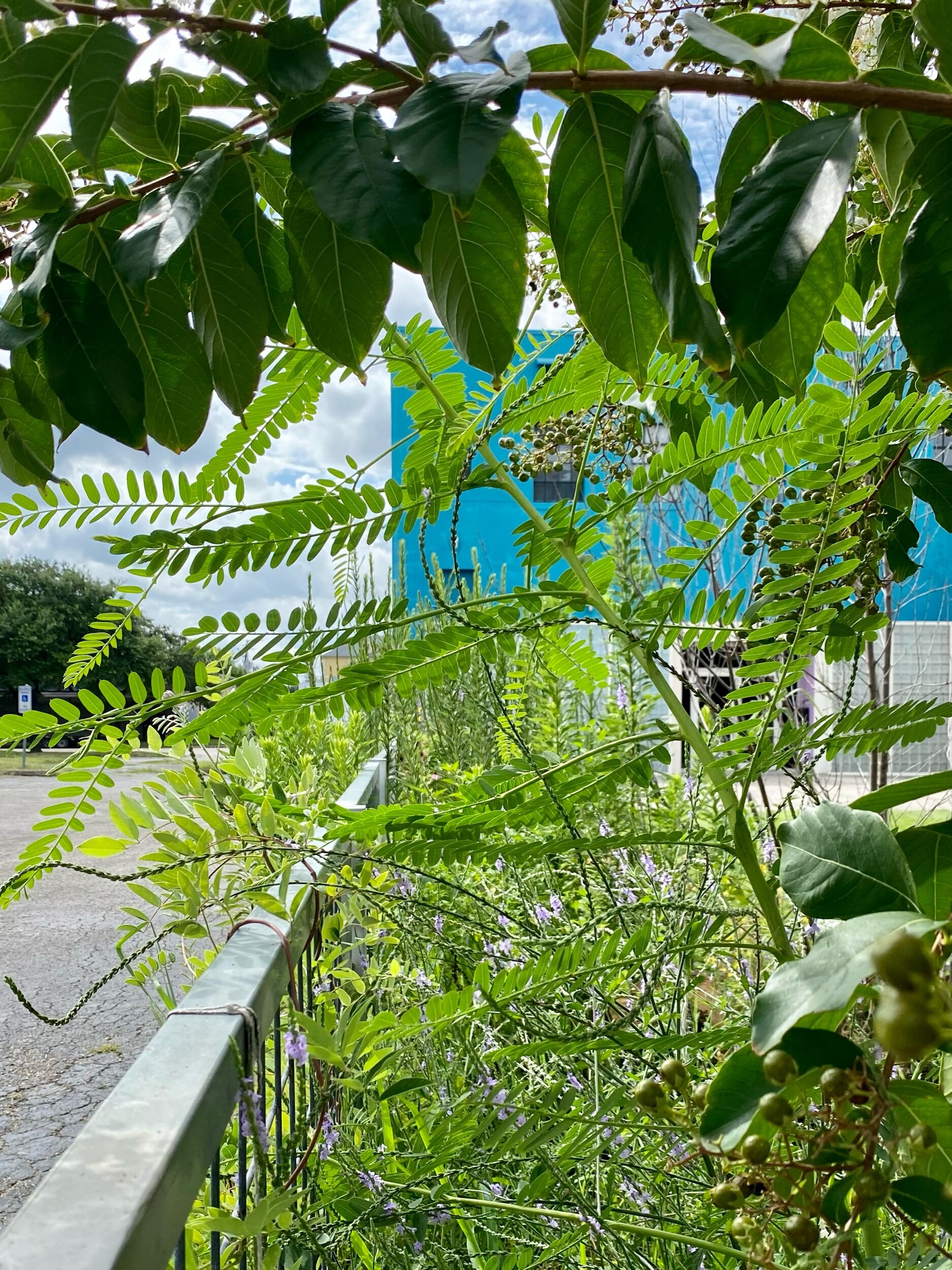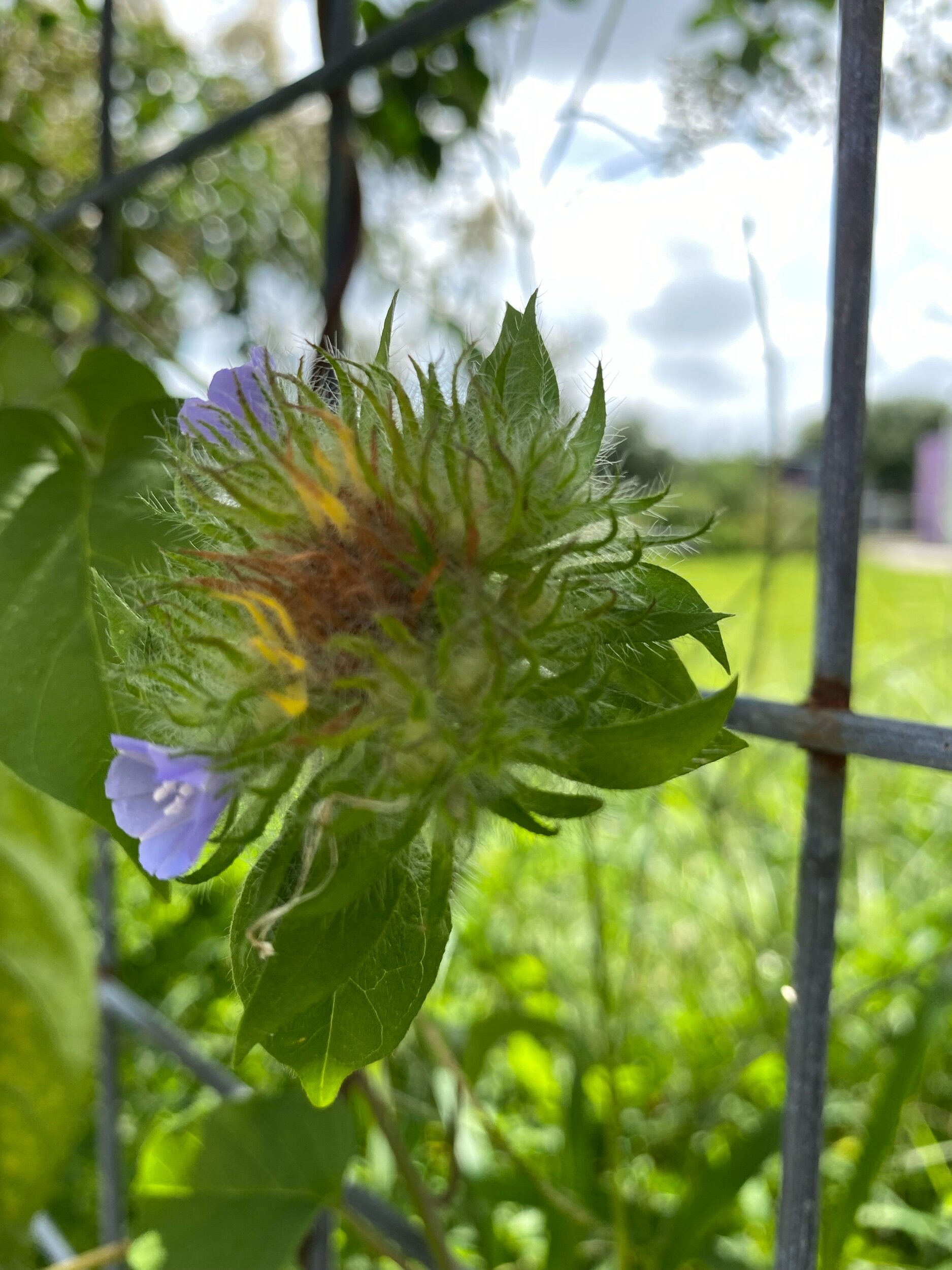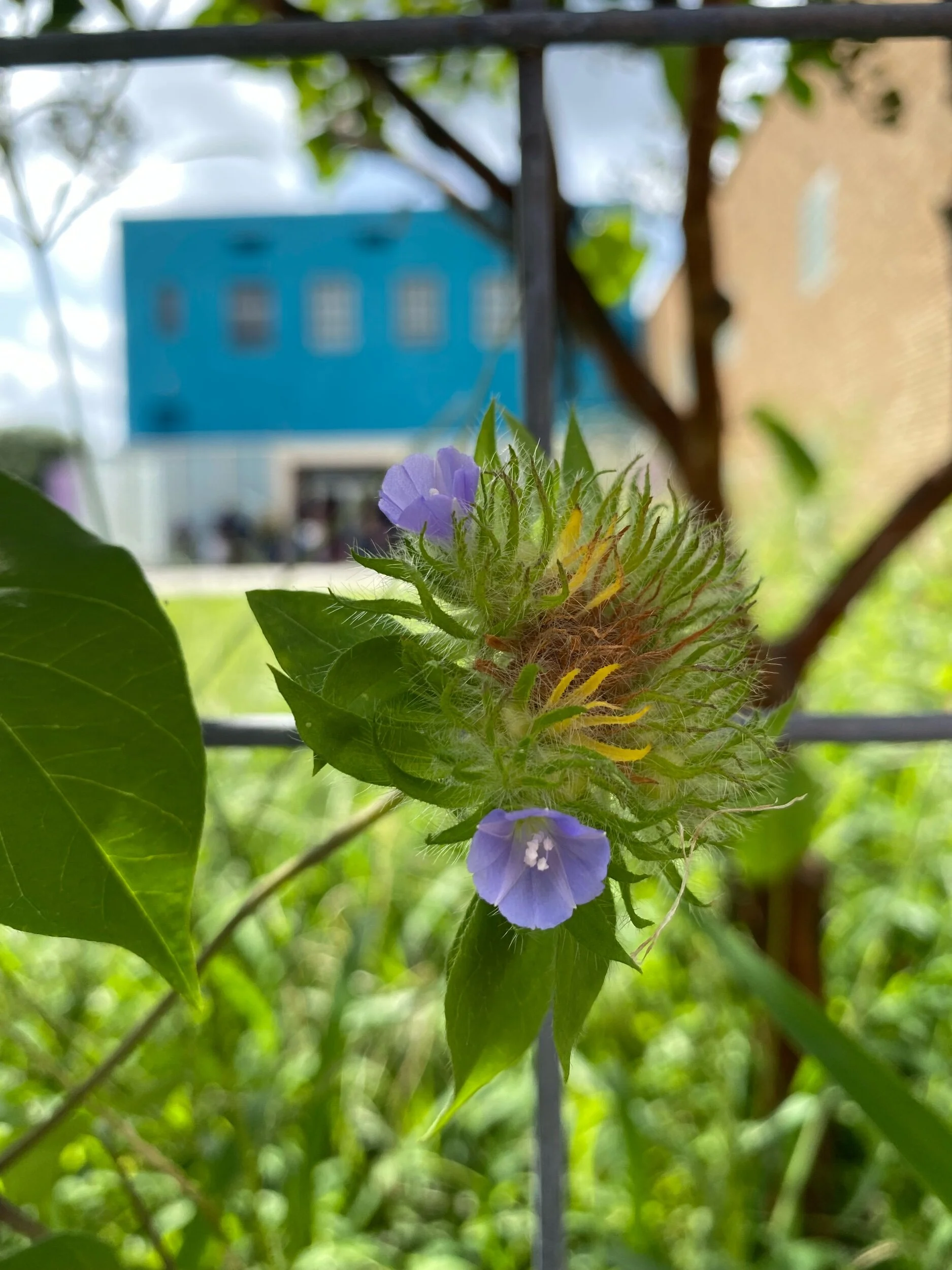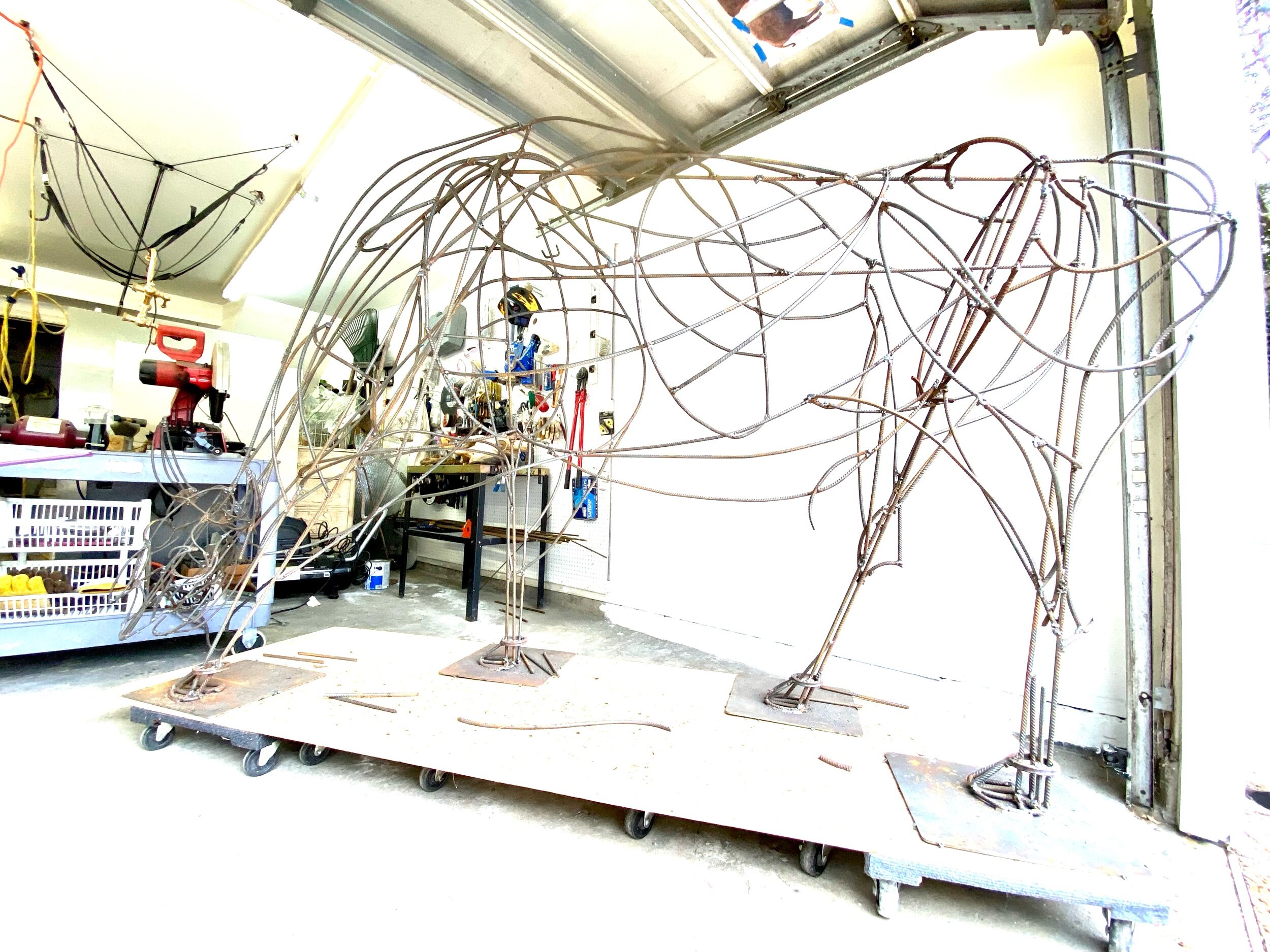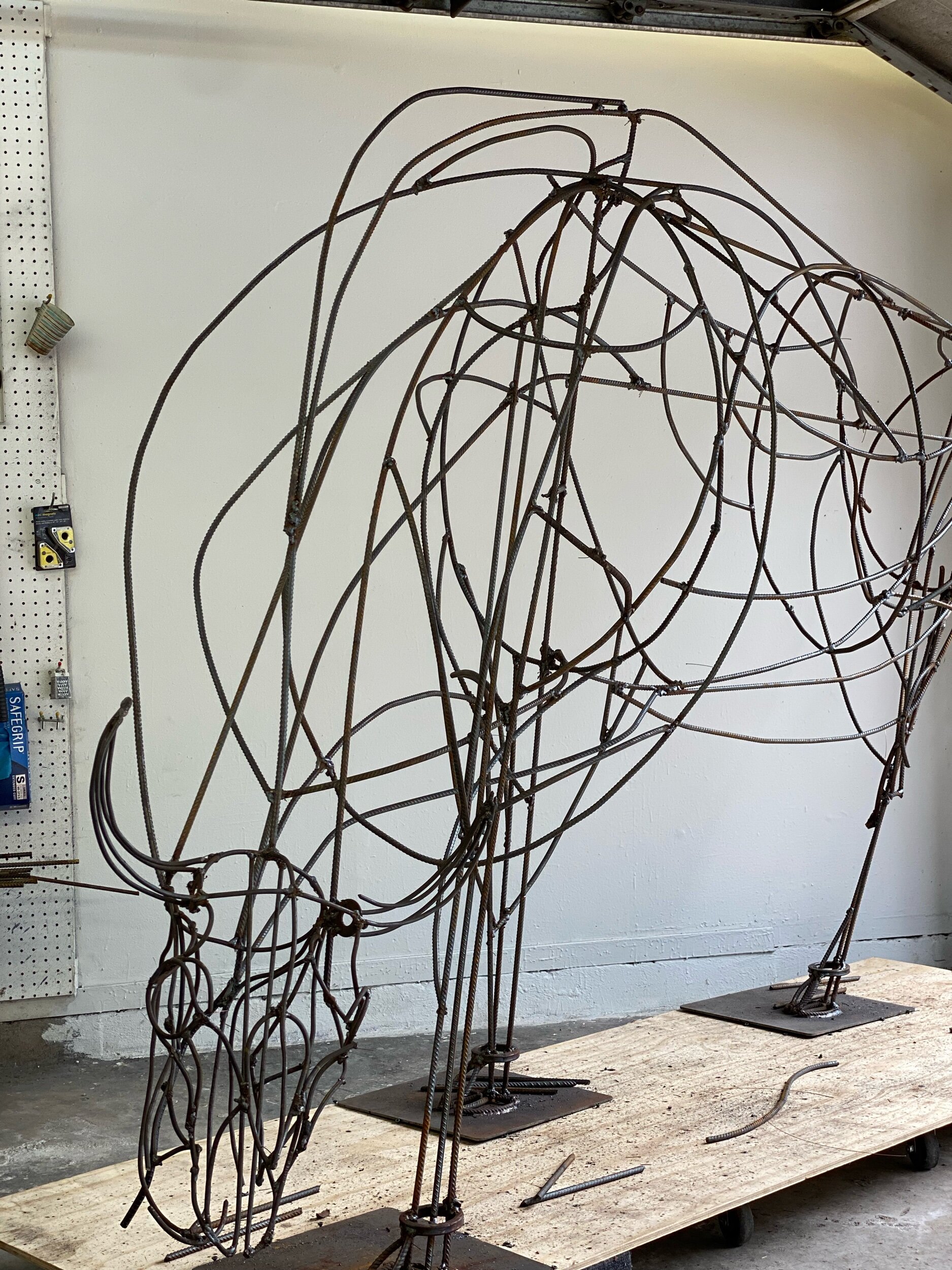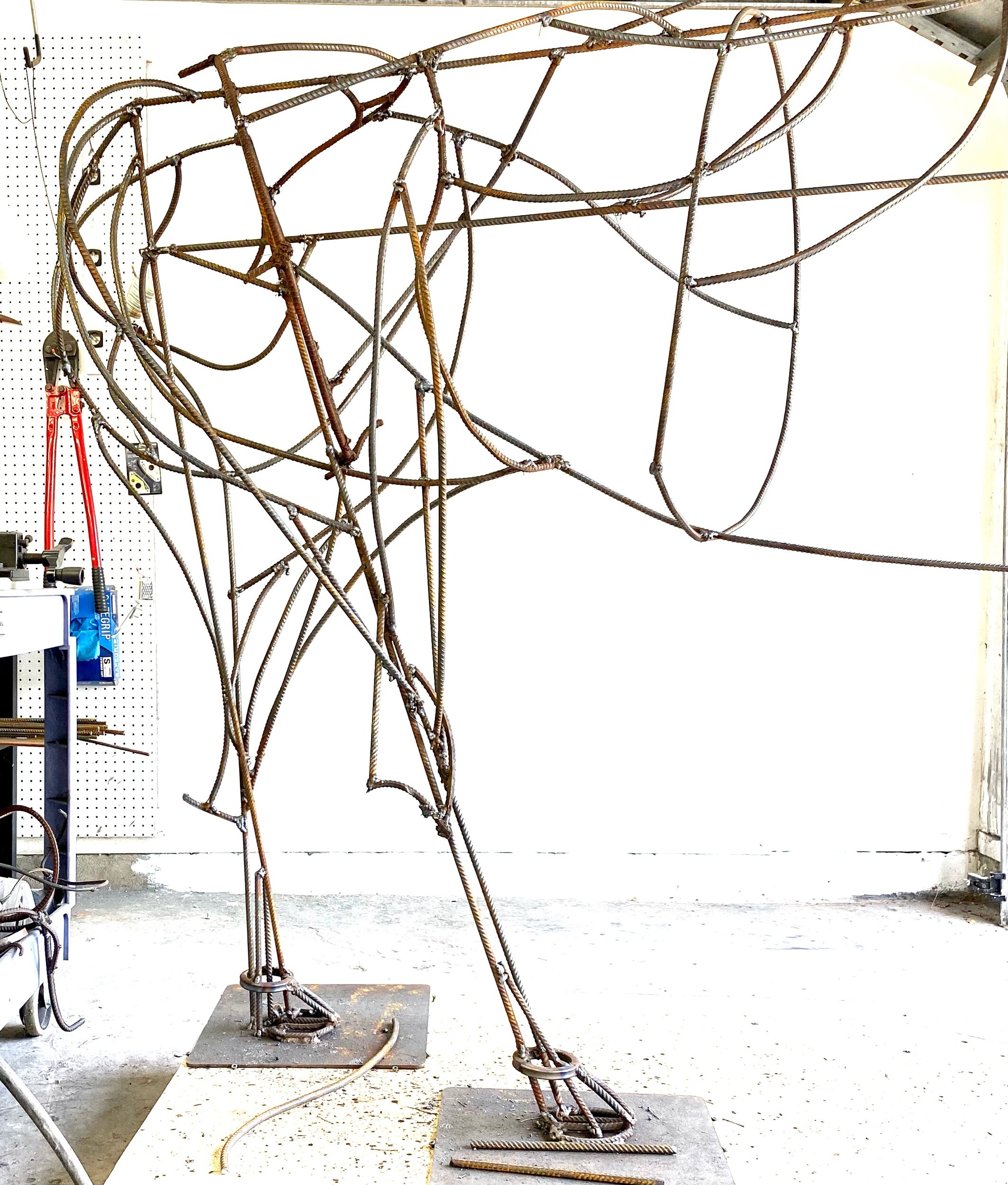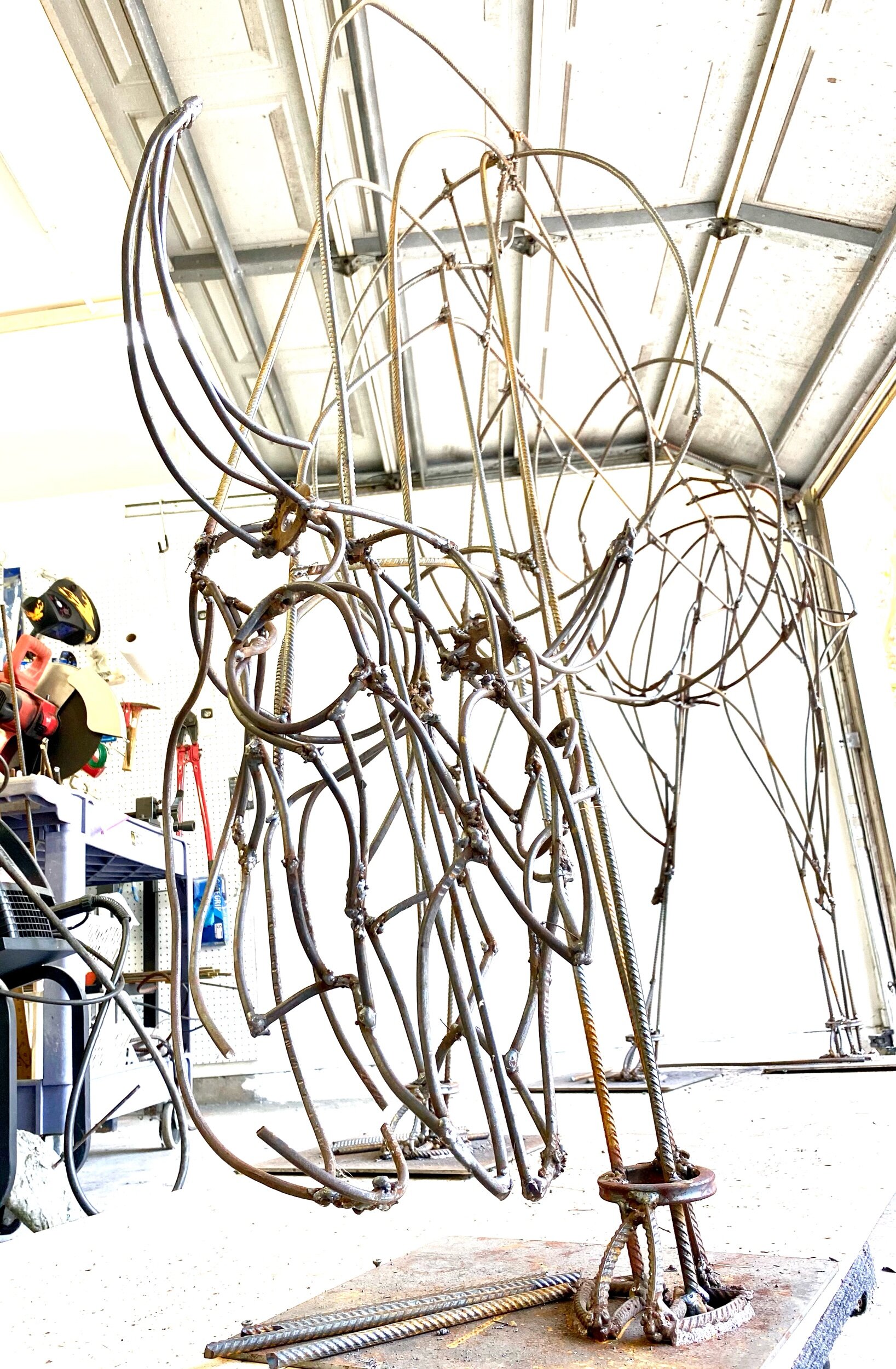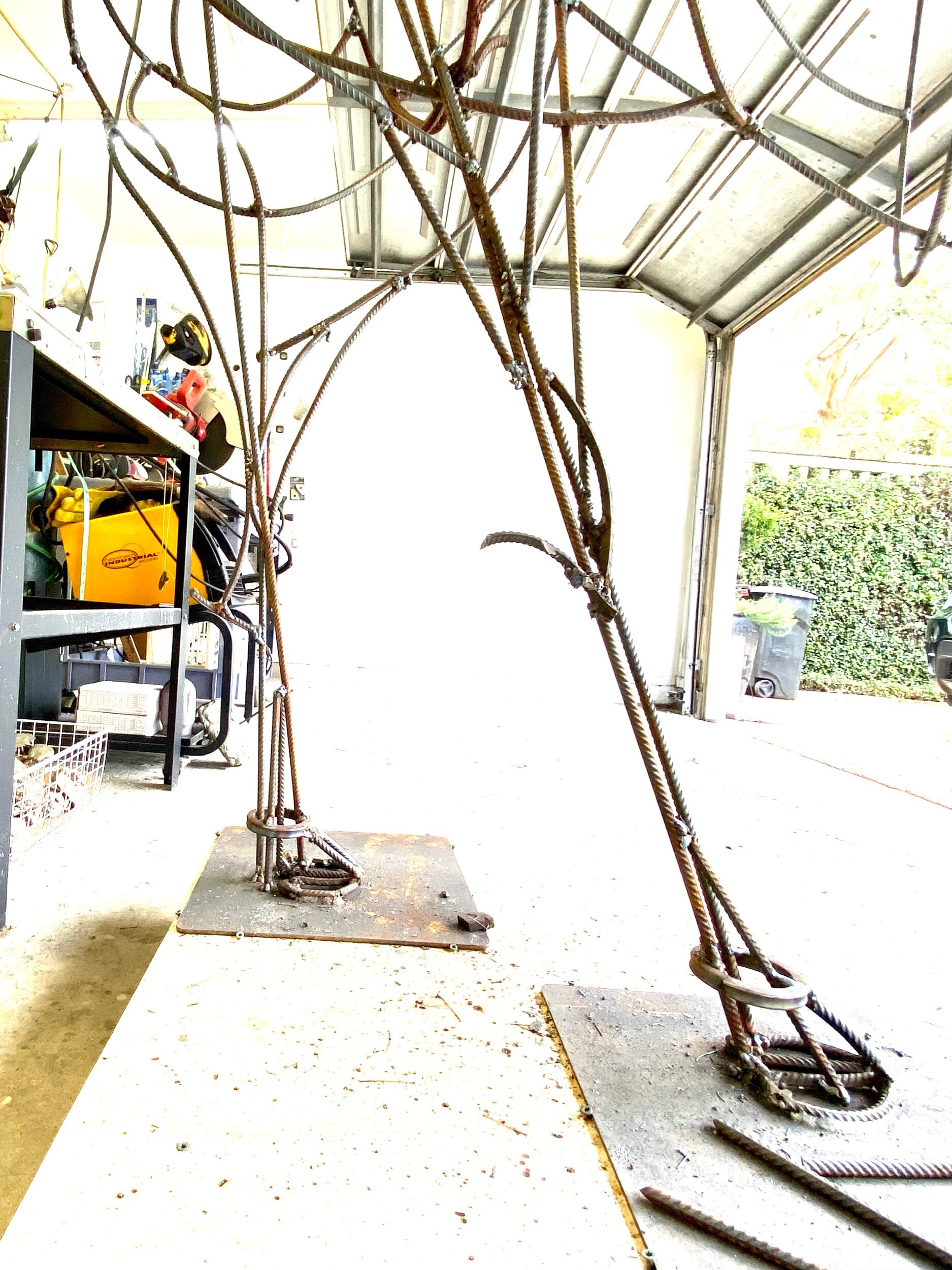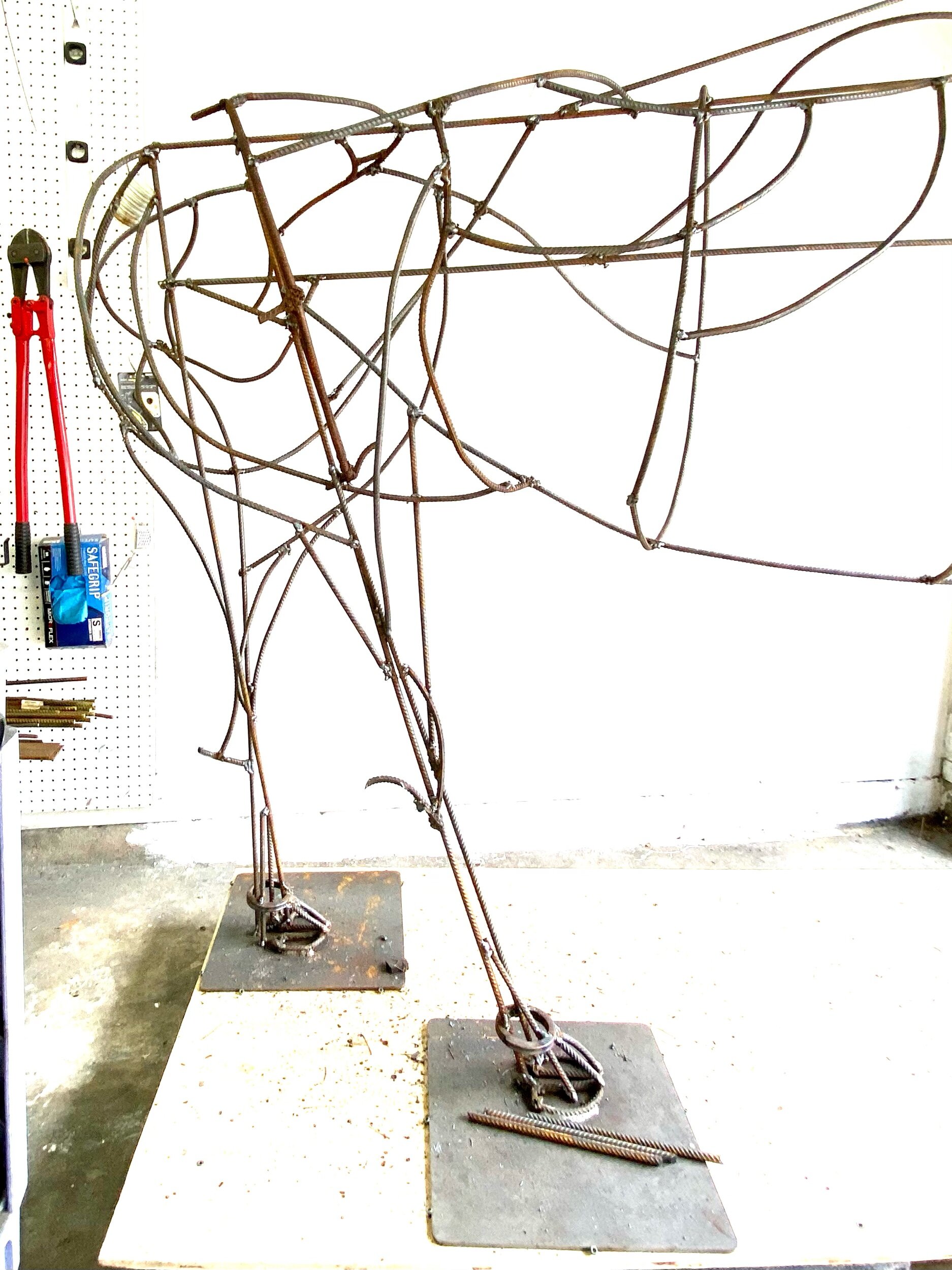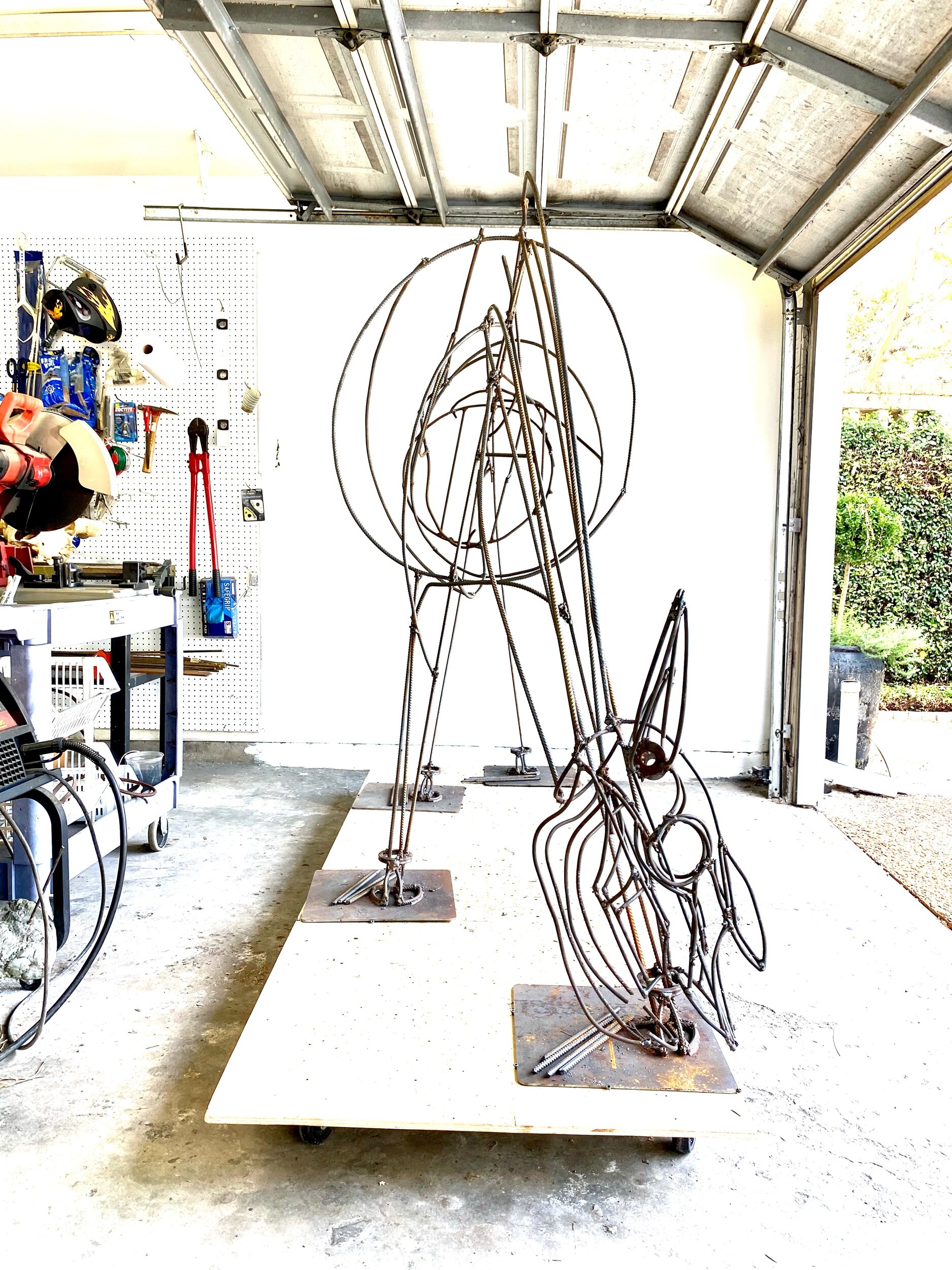SOILED — Tighty-Whities 2021
Photograph by N. Baker
How do you document art that lives beneath our feet? Creating art beneath the Earth’s surface I am finding new ways to document the work and it's movement. This photograph is the result. Let me explain. To test soil for fungi that recycle wood and live on dead material soil, scientists buried cotton fabric. In Symbiosis, to document the Saprophytic fungi, I planted new, washed men's medium cotton briefs. This photograph demonstrates the results. In 2022 I will recreate the piece and grow the tighty-whities in a vertical column. This change will document that living soil, the diversity of microbes is built from the top down. In contrast, when my father farmed in the 50s and 60s, the farm bureau that advised him told him to invest in a new plow to dig deeper to access the richest soil.
The purpose of my work is to change how we see landscape. It isn’t just about creating beautiful gardens. Landscape can store carbon and soak up rainwater to cool the planet. It is the cheapest and fastest way to get our planet back on track.
Digging up the briefs I immediately knew I had made a mistake. I left them In the garden’s soil too long. Still, I dug them out with tender care. The petroleum-based elastic band was entwined with a plant root. The root took the elastic leg 6” deeper into the earth than I planted it. I left the elastic and the root as I found them. Laid them on a board and took them immediately to Nash’s photography studio to document the work.
First, I delicately untangled the elastic. The cotton had completely decayed. The elastic was not biodegradable.
Seeing that the briefs were still intact minus the cotton and plus the root I started reassembling the briefs and the added appendage.
In art many times you have to listen to the materials.

